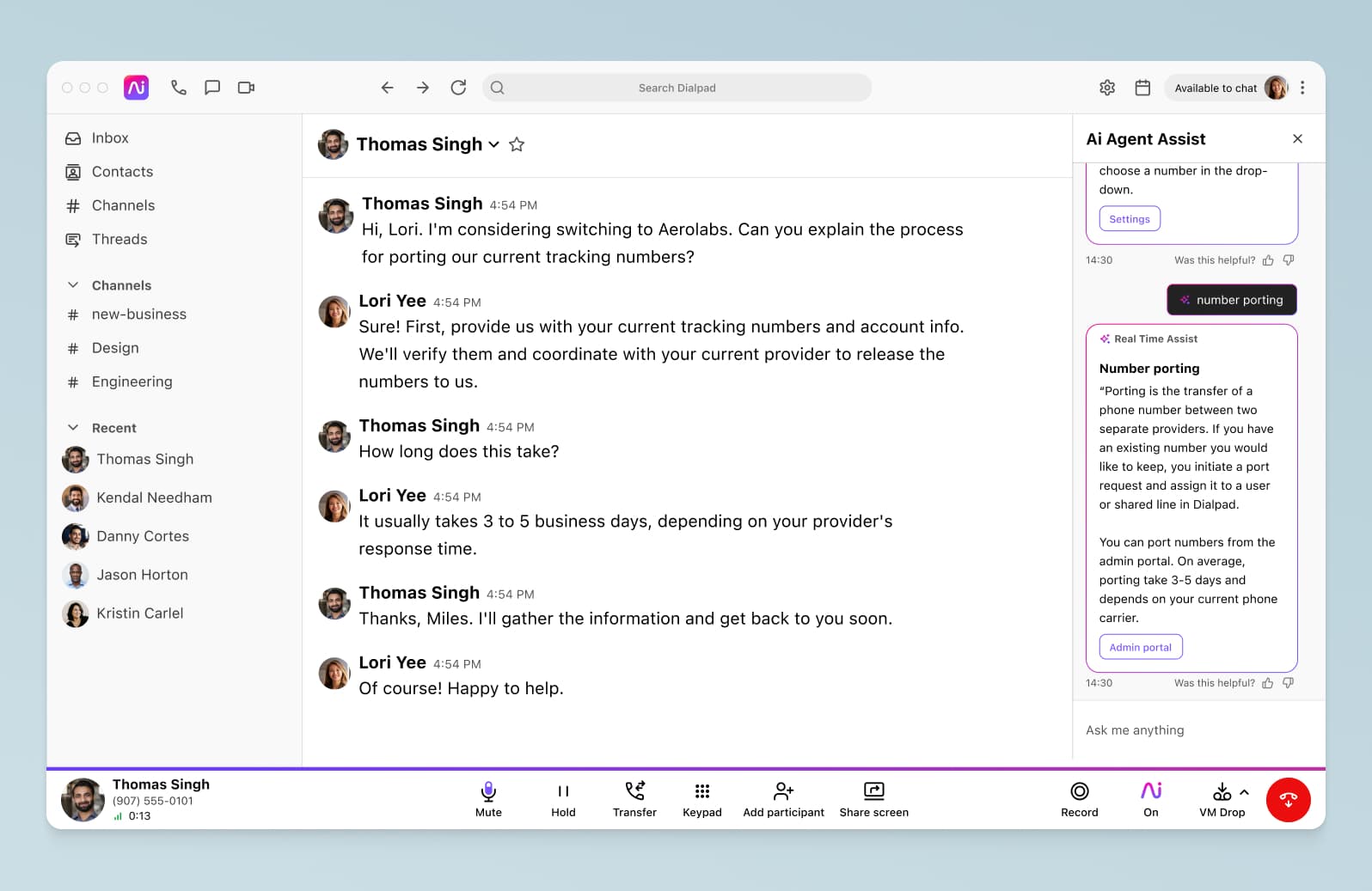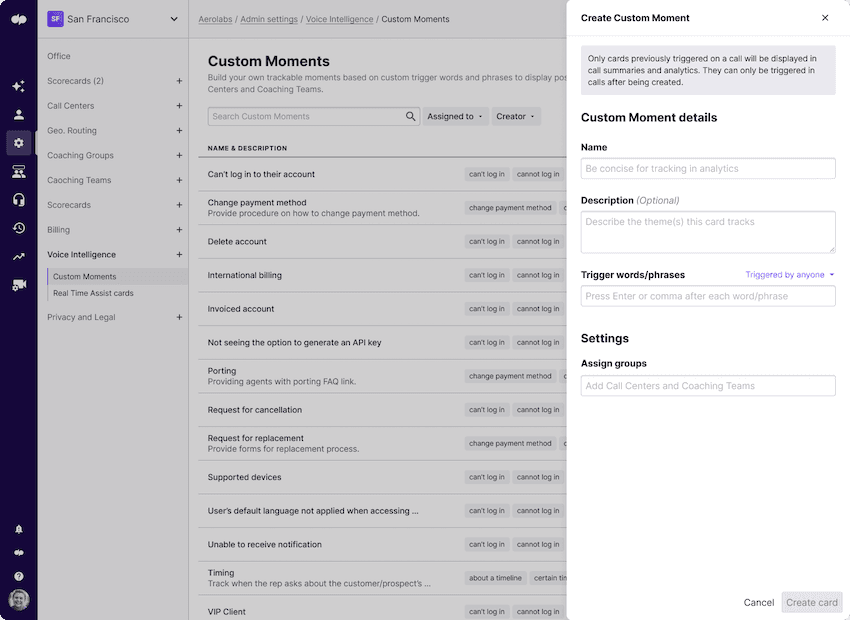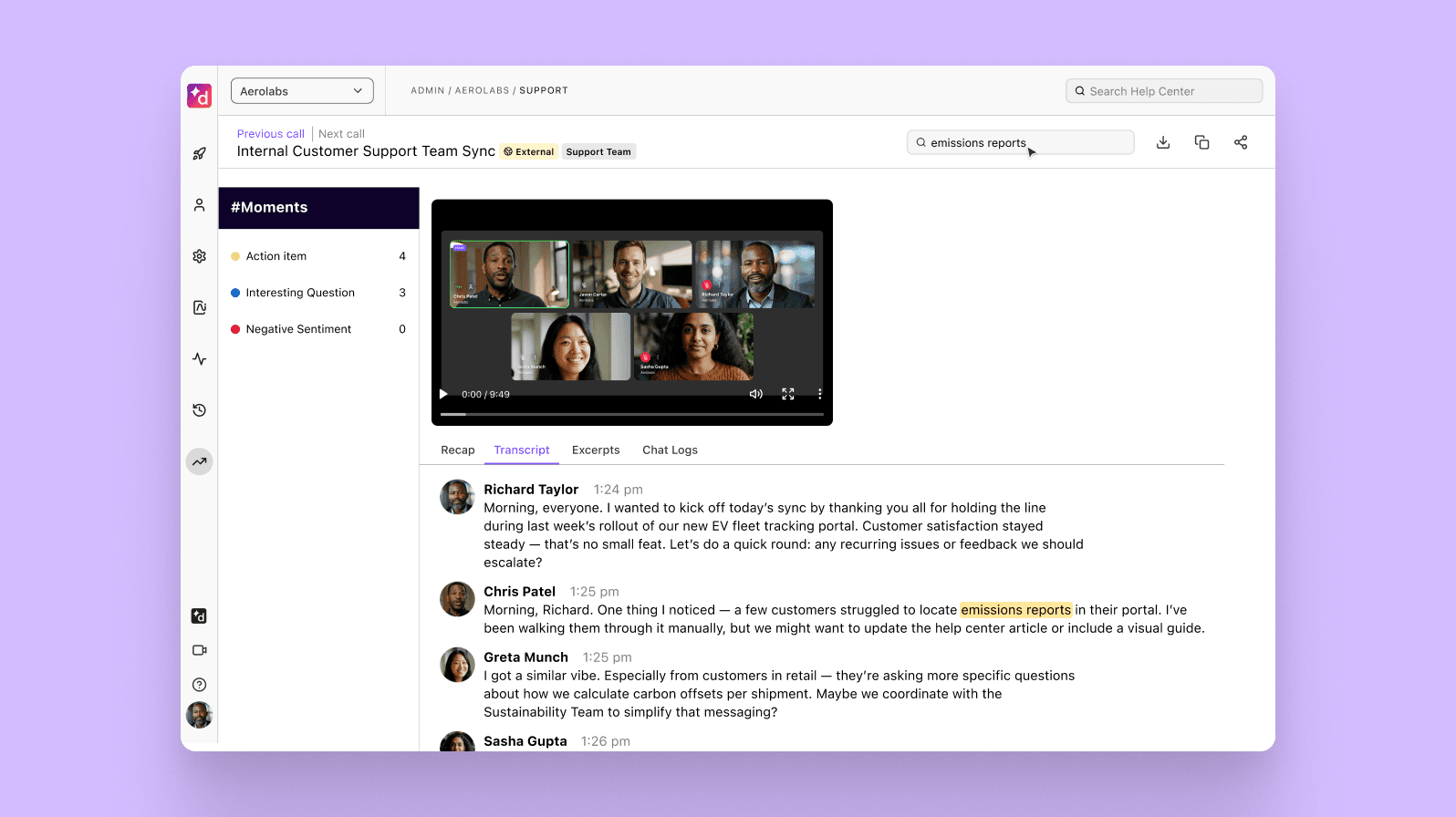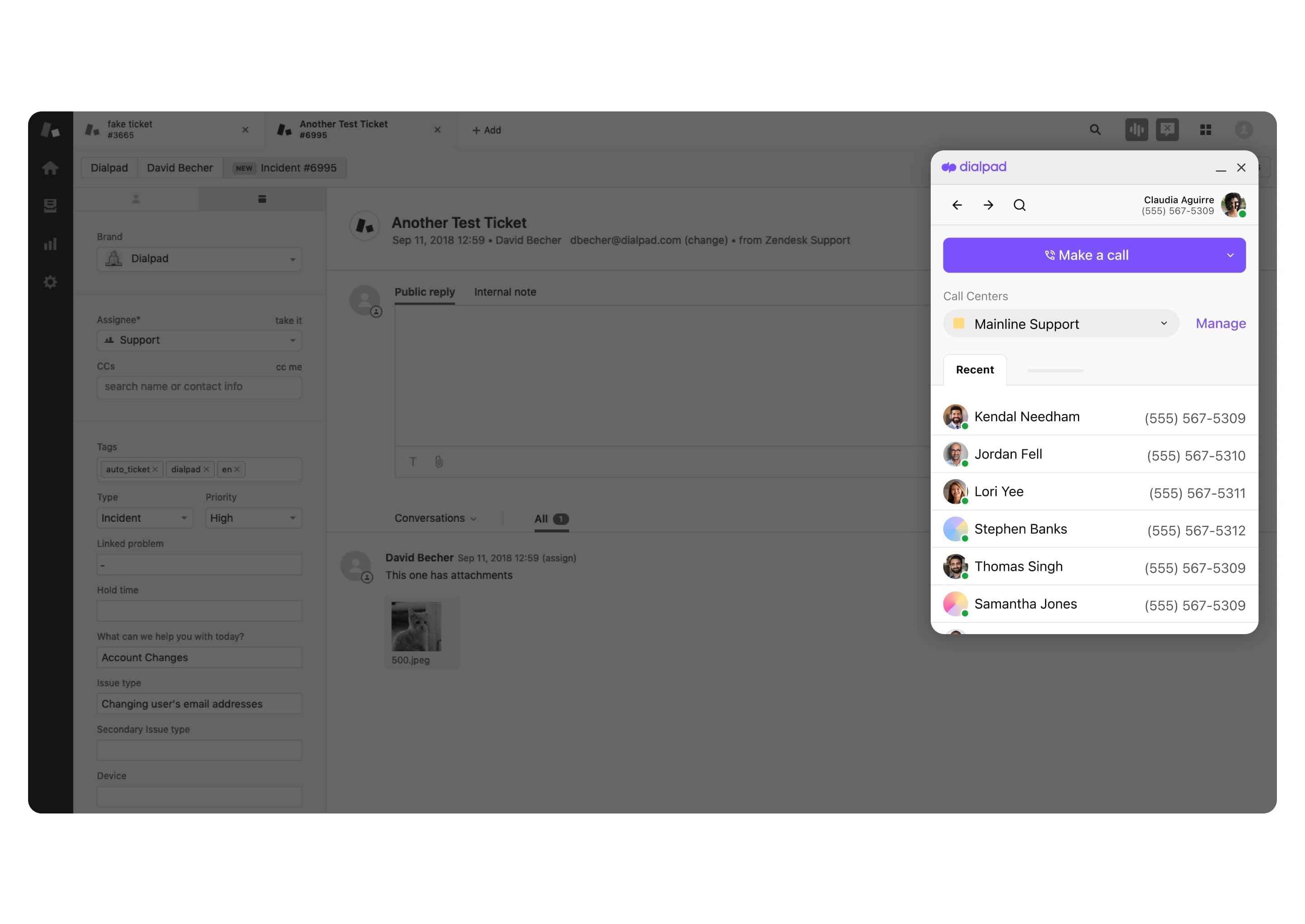Voice analytics: Contact center tips and benefits

Applied Scientist, AI Engineering

Tags
Share
Your business thrives on data. You’re constantly recording various types of data, including key performance indicators (KPIs) and other metrics, to analyze company and staff performance. This data can significantly influence critical business decisions.
If you run a contact center (or have any volume of interactions with customers via phone or other voice-based messaging), you’re probably already using technology and automations like IVR (interactive voice response) menus.
But to truly elevate your customer experience, it’s essential to track your conversational data. This often-overlooked form of business intelligence typically comes from your customer calls.
So, what exactly is voice analytics? How can it be utilized, and what benefits does it offer your business? Keep reading to find out.
What is voice analytics?
Voice analytics (VA) is essentially the use of technology to analyze a conversation. Voice analytic tools record that conversation and can also “translate” it into text so that you have a written record of the conversation, too.
What VA can do for you, from a data perspective, goes one step farther. It analyzes the speech and can even identify the emotions of the speaker based on what they're saying—something that can give your agents (and supervisors) a huge advantage in any type of customer call.
If you look at Dialpad Ai, for example, it uses artificial intelligence or AI-based natural language processing (NLP) and machine learning (ML) to turn customer calls into hard data. Our speech recognition is always getting more accurate, and is the key behind giving our customers the actionable insights that they can leverage as well as learn from.
👉 Dialpad tip:
Every customer interaction is a learning opportunity, and AI can help you improve your customer service in a range of different ways. Many contact center teams that use Dialpad Ai use the insights they've gleaned to not only improve customer satisfaction, but also provide training for new agents and get them up to speed more quickly!
Is voice analytics the same as speech analytics?
The easiest way to think about it is that speech analytics software focus only on what was said while voice analytics tools like Dialpad Ai can focus on how it was said, too (and can recognize more advanced things like phonetics).
Speech analytics is more about just recording and transcribing the words used in a conversation, for agents or others to use to identify keywords across multiple conversations themselves and help in sorting topics.
Your business could use a speech analytics solution or text analytics to get better business insights into the customer experience (CX), and identify trending patterns. But it would be down to you to analyze and interpret the data yourself.
Voice analytics solutions let you do much more.
👉 Dialpad tip:
Check out Dialpad's State of AI in Customer Service Report for the latest insights about AI's impact on businesses and contact centers, based on a survey of over 1,000 CX professionals.
What you can do with voice analytics
Now, let's move on to looking at what you can actually do with voice analytics within your business.
1. Turn conversations into useful data

The sheer amount of data you collect can be overwhelming at times. Contact centers and call centers can service thousands of calls per day—even if those calls only lasted a few minutes on average, that’s a huge amount of chatter to sift through. Finding the data that matters in that volume can be a difficult task.
Voice analytics can cut out the hard work. Dialpad, for instance, helps you find the bits of conversations that actually matter to you. Its robust analytics dashboard lets you search for keywords that you want to track in conversations, like "pricing" or "cancel" or "renew."
This way, you can quickly find gaps in your services, customer churn reasons, and any other important topics that might come up in customer conversations—and make more data-driven decisions across your business. This is actually one very common use case for our customers.
2. Gain competitive intelligence from your customers
One of the best sources of information about your competitors? Your customers!
Yes, you could do a ton of research online and look at third party review sites, but there are few things that are better than hearing actual comments and feedback about your competitors from the people who are actually making buying decisions.
Say, for example, that a customer tells you about an experience they had with your competitor on a phone call. Let’s say it was a horrible experience. Voice analytics can help identify that they’re expressing a negative sentiment—and in this case, this insight could tell you that you have an opportunity to go after this competitor’s customer base with some success.
Voice analytics can also help you identify products, services, or features that you may not be currently providing, but your competitors potentially are.
In Dialpad, you can easily set up "Custom Moments," which are basically keywords that you want to track. For example, you could set up a Custom Moment for each of your competitors' names:

Now, you'll be able to track how frequently those moments come up in customer calls in your analytics dashboard! (See the screenshot I shared earlier.)
3. Identify quality monitoring gaps and customer service training needs
You already know the importance of call monitoring or quality monitoring (call center recordings are very useful for this) for improving training for new and existing agents.
Voice analytics software can help you take that whole process to the next level.
For example, with Dialpad Support, a supervisor can see, at a glance, how calls are going by quickly scanning the transcripts for each call—which are populated in real time.
With this information, they can decide whether they need to do live coaching on certain calls to help agents out. Supervisors can also review transcripts of their agents' calls, search for Custom Moments (maybe lots of customers have been having issues with a certain feature lately), and tag agents in comments within these transcripts to highlight learning opportunities:

With Dialpad, you can set up post-call summaries that contain these transcripts and to-do items to be emailed automatically after a call is finished, so you don't have to trawl through recordings and files.
Not only that, Dialpad Ai can go one step further—the AI can analyze phone calls and messaging conversations to identify keywords that come up regularly. This helps contact center supervisors provide training at scale, because they can then create RTA (Real-Time Assist) cards that offer recommendations for agents when certain keyword triggers occur during a call.
In this example, a supervisor identified that "porting phone numbers" comes up frequently in customer support calls. So, they created an RTA card that pops up when a customer says "port" or "porting" a phone number, and the pop-up provides talking points and notes to help the agent explain how porting a number works. This is especially helpful for new agents who may not be familiar with the product yet or even more seasoned contact center staff who need to quickly learn how to talk about a new product feature:

Benefits of call center voice analytics
1. It’s cost-effective
68% of businesses see voice analytics as something that saves on costs
52% believe it can improve revenue
72% see it as helping to improve their customer service
To dig into this further, voice analytics can help with costs in a number of specific areas:
Analytics. With the better data and analytics, you can identify QA (quality assurance) processes and customer service gaps—which will ultimately pay you back in the form of higher customer retention and upsell/cross-sell opportunities.
Self-service. Voice analytics can help you identify areas and questions where you can provide self-service solutions—like FAQs or searchable knowledge bases—for your customers, which would allow customers to solve more problems on their own and allow your agents to focus on more complex and high-value calls.
Cost per call. You can reduce your cost per call by using insights gleaned from voice analytics to better equip your agents to resolve issues more quickly and with fewer transfers.
Staff retention. Staff attrition means new staff, which means repeated cycles of training and the costs that come with that. With voice analytics, you can improve agent performance and confidence, and help them be happier in their work (which will hopefully lead to lower attrition rates and lower training costs).
Compliance. Compliance and regulatory requirements such as PCI (Payment card industry) play a big part in business today. Your voice analytics can help make sure agents stick to any requirements and can also prompt them about disclosures and other requirements, which can help you avoid potentially costly litigation.
2. It helps you track keywords and topics more easily
Beyond just metrics and numbers, one of the most valuable insights you can glean from voice calls in a contact center is what your customers think. What are their opinions and thoughts about your products and services, about your competitors, and so on?
With voice analytics, you can see at a glance how frequently your competitors’ names are coming up in conversations, how many people are asking about pricing, and more. If you have a communications platform that provides accurate speech-to-text transcriptions of your phone calls, that can help you identify the “hot topics” that are coming up again and again in calls with customers and prospects—without you having to listen to hours and hours of recordings.
3. It's an extremely low-effort way to improve your customer experience in real time
One of the main benefits of having good AI voice analytics software is that it gives you the ability to make real-time decisions and interventions. Being able to prompt agents to move in a different direction or intervening if a call is going badly is one of the great quality management features of Dialpad’s Ai technology.
👉 Dialpad tip:
Learn more about "NLP," or natural language processing.
4. It can sync up with other tools you're already using
Real-time transcriptions and coaching aside, if your customer-facing team is already using software like Salesforce or Zendesk, that's a great opportunity to look for an integration with your voice analytics software. For example, Dialpad's voice analytics features come included in its contact center platform—which also integrates with CRMs and other tools like Zendesk to allow contact center teams to take and track calls, right from within Zendesk.
No more copying customer data back and forth between different tools, no need to switch constantly between tabs and windows:

The science behind voice analytics
Voice analytics is a powerful tool that helps businesses understand and improve their customer interactions by analyzing spoken conversations. Let's break down the key components that make voice analytics work.
1. Speech recognition and conversion
Automatic Speech Recognition (ASR)
ASR technology converts spoken words into text. It's the core of any voice analytics system, allowing computers to understand and process what people are saying.
Text-to-Speech (TTS)
TTS technology does the opposite of ASR—it turns written text into spoken words. While TTS is often used for automated responses, it can also help verify and correct transcriptions in voice analytics.
Phonetic analysis
Phonetic analysis examines the sounds in speech. This helps improve the accuracy of ASR by recognizing different accents and dialects.
Word spotting
Word spotting is all about finding specific words or phrases in a conversation. This is useful for identifying important keywords related to customer satisfaction or business performance.
2. Natural Language Processing (NLP)
Syntax analysis
Syntax analysis looks at the grammatical structure of sentences to ensure that the transcription is contextually correct.
Semantic analysis
Semantic analysis focuses on the meaning behind words and sentences, helping to understand the context and relationships between words.
Pragmatic analysis
Pragmatic analysis considers the context and intent behind what is being said, adding another layer of understanding to the conversation.
3. Emotion and speaker analysis
Lexical analysis
Lexical analysis looks at the words used to detect emotions or sentiments. It helps gauge customer feelings like frustration or satisfaction.
Acoustic analysis
Acoustic analysis examines the pitch, tone, and volume of speech to understand the speaker’s emotional state.
Speaker diarization
Speaker diarization separates an audio stream into segments attributed to different speakers, making it easier to analyze conversations with multiple participants.
4. Data management and real-time analysis
Audio indexing
Audio indexing organizes and tags audio files, making them easy to search and retrieve for analysis.
Real-time analytics engine
A real-time contact center analytics engine processes voice data as it is captured, allowing businesses to gain immediate insights and respond quickly to customer needs.
Database management systems (DBMS)
DBMS store and manage large volumes of voice data, ensuring it can be efficiently accessed for analysis.
5. Voice biometrics and security
Speaker verification
Speaker verification uses voice characteristics to confirm a speaker’s identity, providing secure authentication.
Voice encryption
Voice encryption protects voice data from unauthorized access, ensuring privacy and compliance with regulations.
6. Development tools and integration
SDKs and APIs
SDKs and APIs provide tools to integrate voice analytics into existing applications, allowing businesses to customize their solutions.
Platform integration
Platform integration ensures that voice analytics can work seamlessly with other systems like CRM and contact center platforms, enhancing overall business processes.
Want real-time voice analytics in your management arsenal?
While voice analytics has been around for over a decade, recent advancements in AI and machine learning have transformed it into a powerful tool for contact centers. If you manage any type of contact center, voice analytics as well as conversation analytics are essential additions to your toolkit.
You already possess valuable insights and data within your daily customer conversations—you just need a more effective way to uncover them. Our AI team has developed Dialpad Ai to make voice analytics accessible, whether you're using our cloud-based unified communications or cloud contact center platform.
If you're looking to boost sales and enhance your customer journey, give Dialpad Ai a try.
Want to use the power of voice analytics to increase sales, improve objection handling...
And provide a better customer experience? Book a demo of Dialpad, or take a self-guided interactive tour of the app on your own!
